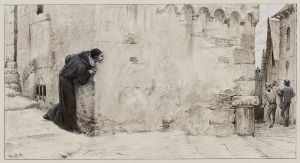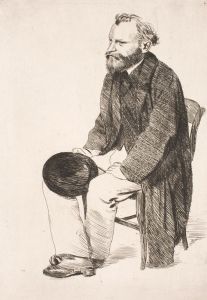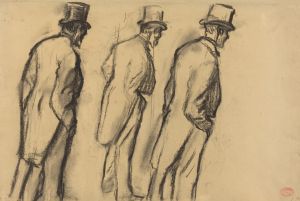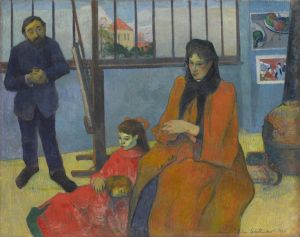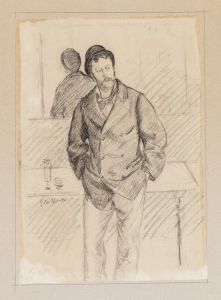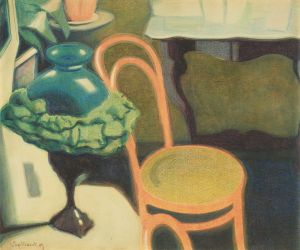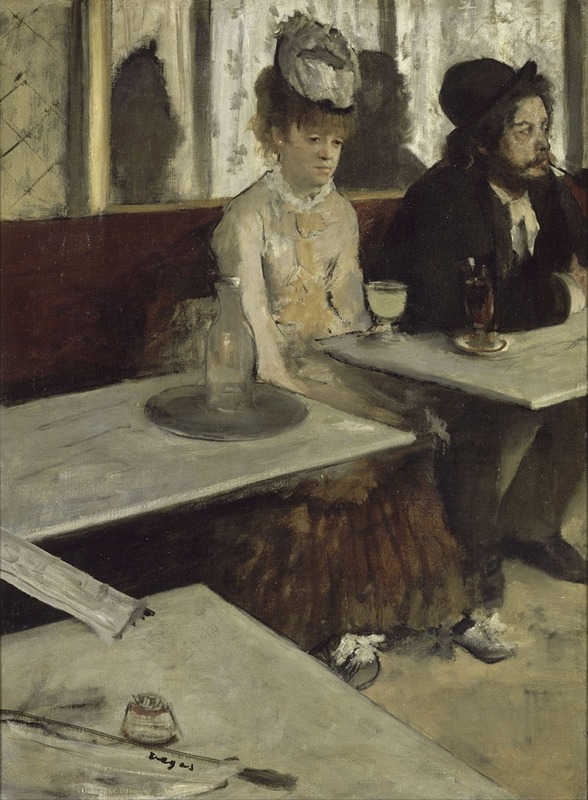
In A Café
A hand-painted replica of Edgar Degas’s masterpiece In A Café, meticulously crafted by professional artists to capture the true essence of the original. Each piece is created with museum-quality canvas and rare mineral pigments, carefully painted by experienced artists with delicate brushstrokes and rich, layered colors to perfectly recreate the texture of the original artwork. Unlike machine-printed reproductions, this hand-painted version brings the painting to life, infused with the artist’s emotions and skill in every stroke. Whether for personal collection or home decoration, it instantly elevates the artistic atmosphere of any space.
Edgar Degas's painting In a Café, also known as L'Absinthe, is a significant work in the artist's oeuvre and a notable example of his exploration of modern life in late 19th-century Paris. Completed in 1875–1876, the painting depicts a man and a woman seated at a café table, with a glass of absinthe prominently placed in front of the woman. The work is celebrated for its unflinching portrayal of urban alienation and the social realities of the time.
The painting features two figures: the actress Ellen Andrée, who modeled for the woman, and the artist Marcellin Desboutin, who posed as the man. Both figures appear disengaged and introspective, with their gazes directed away from each other. The composition emphasizes their isolation despite their physical proximity, reflecting themes of detachment and ennui that were prevalent in the rapidly changing urban environment of Paris during the late 19th century.
Degas's use of muted tones and careful attention to detail enhances the somber mood of the scene. The café setting, likely inspired by real-life establishments frequented by Parisians, serves as a microcosm of modern life. The glass of absinthe, a popular and controversial drink at the time, symbolizes both the pleasures and the darker undercurrents of contemporary society. The painting's candid and unidealized depiction of its subjects was considered unconventional and even shocking to some viewers when it was first exhibited.
In a Café was first shown to the public at the Second Impressionist Exhibition in 1876, where it received mixed reactions. Some critics praised Degas's technical skill and his ability to capture the essence of modern life, while others found the subject matter and its execution unsettling. Over time, however, the painting has come to be regarded as a masterpiece of Impressionist art and a poignant commentary on the human condition.
Today, In a Café is housed in the Musée d'Orsay in Paris, where it continues to be studied and admired for its artistic and historical significance. The work remains an enduring example of Degas's ability to combine technical precision with a deep exploration of the social and psychological dimensions of his subjects.





